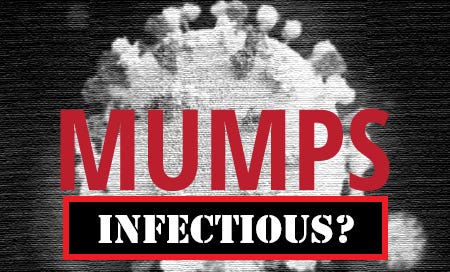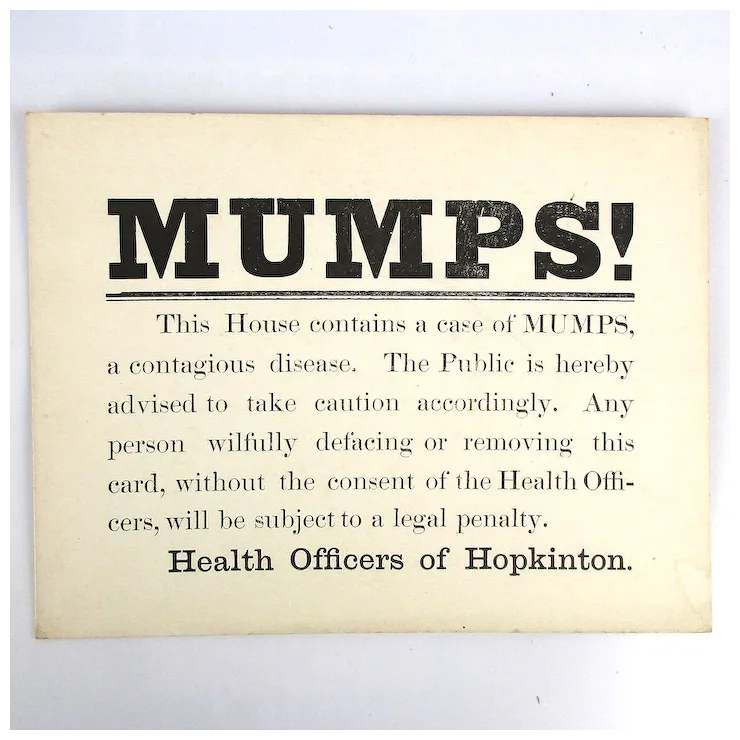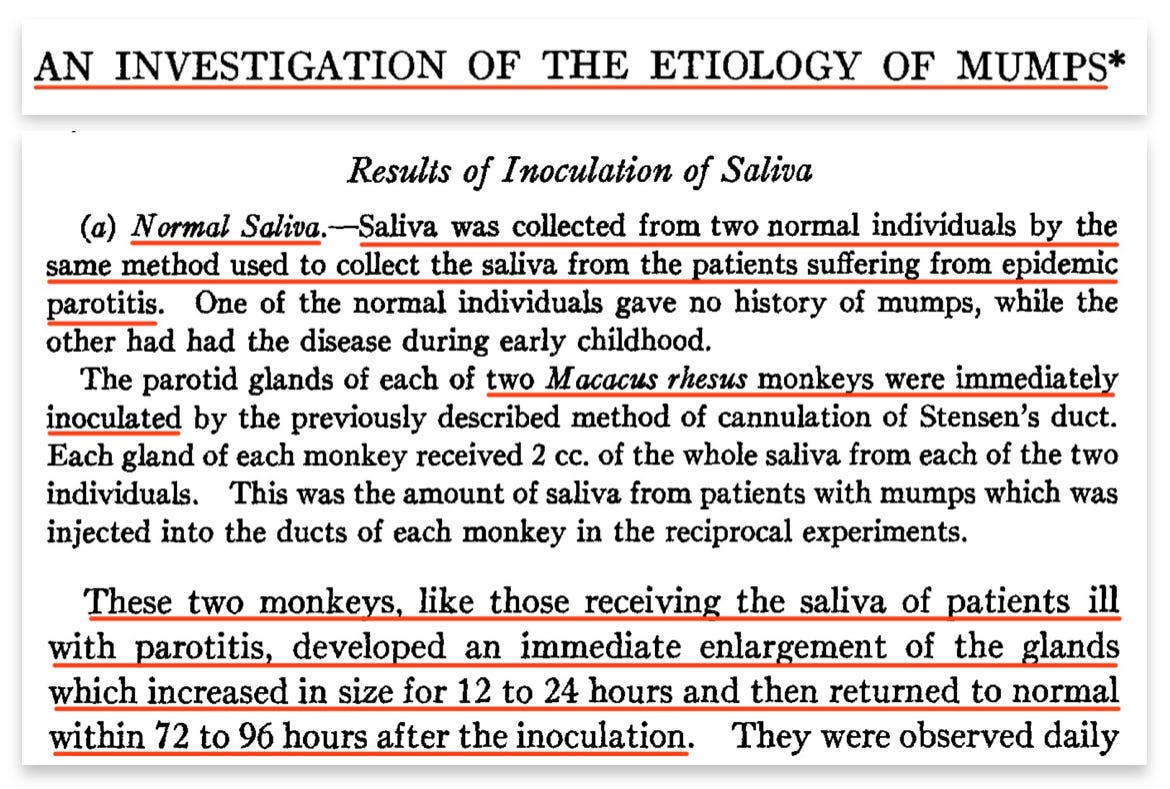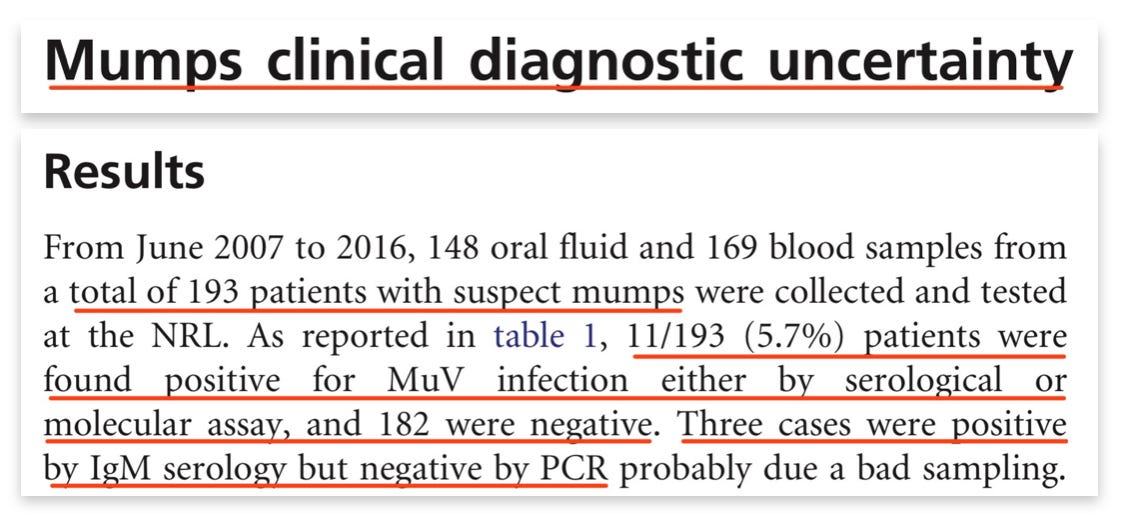Mumps is a disease characterized by puffy cheeks and a tender, swollen jaw. It is purported to be a contagious disease caused by a virus.
“Mumps is a contagious disease caused by the mumps virus. It spreads through direct contact with saliva or respiratory droplets from the mouth, nose, or throat.
You can get mumps and spread the virus by:
Coughing, sneezing, or talking.
Sharing items that may have saliva on them, such as water bottles or cups.
Participating in close-contact activities with others, like playing sports, dancing, or kissing.”
However, a closer inspection reveals that this claim is in odds with observed reality.
A 1945 paper published in the The American Journal of the Medical Sciences states that it was common for siblings with intimate and prolonged exposure to a case of mumps in the household to escape the disease.
“It is not at all unusual for siblings with intimate and prolonged exposure to a case of mumps in the household to escape infection.”
Experiments on laboratory animals did likewise not yield any convincing evidence to support the alleged contagious nature of mumps.
“Experimental research with mumps as an air-borne disease is not practical, since monkeys are the only susceptible animal and even these can be infected only by direct inoculation.”
A 1945 study published in Journal of Experimental Medicine outlined how normal monkeys were kept in the same cage as artificially ‘infected’ monkeys, yet no disease transmission was observed.
“An experiment was undertaken in which a normal monkey of a recent shipment was kept in the same cage with an animal which had been inoculated with virus … No indication of disease was noted.”
[…]
“Johnson and Goodpasture (4) did not observe any signs of disease in their normal animals which were in contact with those which had been inoculated, and so concluded that infection did not take place in this manner.”
Dr. W. L. Scott, reported in a 1937 publication in The Lancet, the results of a careful investigation into the problem of “The Contact in Industry.” With regard to mumps he found that, over a period of ten years, out of 3463 contacts with the disease, only 34 (1%) subsequently developed the disease.
How was it proved that mumps is caused by a virus?
Virologists injected saliva into the parotid glands of monkeys with the saliva of people with mumps, and the glands became inflamed.
But in a control experiment with saliva from healthy people, monkeys likewise had enlargment of the glands.
In a study from 2018, virologists could not find any mumps “virus” in 94.3% of patients with the clinical manifestations of mumps.
No imagined pathogen is required, as the characteristic signs and symptoms of mumps have been shown to be induced by toxicity.
In his 1957 article entitled Guides for Clinical Diagnosis of Some Infectious Diseases, Archibald Hoyne states that swelling of the parotid glands (mumps) can be caused by various poisons, such as mercury, lead and iodides.
“Mumps cannot always be diagnosed visually for a number of reasons. Swelling of the parotid glands can be caused by certain metals, e.g., mercury, lead and the iodides.”
A study from 2017 outlined a case report of a woman who got mumps following paraquat (pesticide) poisoning.
“In the present case report, a 45-year-old female who ingested PQ was admitted to the Emergency Department of Liaocheng People’s Hospital (Liaocheng, China). During the development of the disease, mumps was caused by a cavity ulcer following PQ poisoning.”
A study published in 2002 describes how a man swallowed a pesticide called parathion, and subsequently developed parotitis (parotid gland swelling).
“This paper describes a case of acute organophosphate-induced parotitis in a patient with pre-existing sialolithiasis. The patient developed bilateral facial swelling in the pre-auricular area extending to the angle of the jaw … This case illustrates that organophosphate-induced parotitis can occur.”











Yep, all poisonations cause ALL metabolic dysfunctions to varying degrees, depending on their toxicity. Every lst one of them.
Thank you for writing this article, I have attached a link here -
Measles & Mumps in the Long Run Improve Life
https://hewettinsite.substack.com/p/measles-and-mumps-in-the-long-run